Making a Southern Loco Coupling
Notes by Rob
I was recently asked by one of our builders, where could He buy a ready made coupling as a time saving measure.
My reply was "I don't think you can, the Southern variant seems to be different from most railway in having a three link screw coupling; you might have to make one."
e.g. At the time of writing, Polly Models offer BR / LNER / GWR and LMS hook and screw coupling, wagon type three link couplings, but not the Southern type.

The construction of my Southern Railway Class Q1 in 5" gauge was supposed to be a quickie project, which did not go to plan; it became more complex, and much better detailed than I originally envisaged, also getting sidelined for life events and other locos... - probably a common story.
Also as a time saving measure, many years ago I purchased a commercial 2 link screw coupling for the front of the locomotive, and was disappointed that I was unable to purchase the correct 3 link Southern Railway screw coupling.
These were of a different style to the most other railways, in having 2 small links connected by a threaded winding arm, and include a small locking finger to prevent the coupling from loosening whilst the train was moving.
A longer third link suspended that assembly from the coupling hook.
The same arrangement applies to other Southern Railway steam stock of this period.
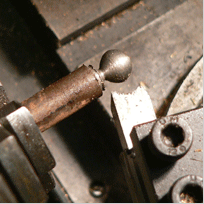
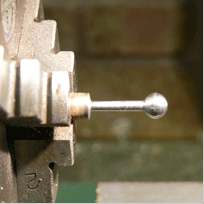
As other pieces of detail were added, it seemed a failing not to include the correct profile coupling on my locomotive.
Not having drawings, I decided to work it out from the prototype, and originally penned this article in 2006...
The Q1 photo was my starting point, and this is a dark coloured assembly, so thanks to Fred for pointing out that to get this look, items need to be oil blackened.
This meant that silver soldering components was not the best option, and instead they should be made from solid.
Of course, this of course is personal taste, other may choose a bright finish.
So, I started with the links...
As the photo shows, turned from solid, the end of each link is initially turned using a form tool, a piece of tool steel shaped to cut the correct profile.
First the outer curve was shaped, and then a different used to turn away the centre portion, the spindle being a careful plain turning job, down to 1/8" diameter.
After that the ends were flattened, then held in 3 jaw chuck for drilling.
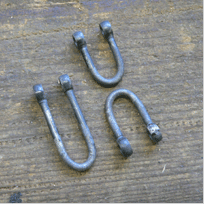
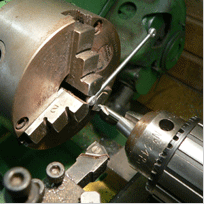
Also, one point to note is that the link 'dumbells' need to be annealed regularly while bending, and formed around a brass or similar soft former of the correct diameter (11/32").
I managed to snap 4 during the turning and bending process to get the last one made ...
Although I meticulously calculated the length of the links, I hadn't allowed for the steel stretching around the former, so had to correct my dimensions...
The coupling tensioner has handed 2 b.a. threads, and a groove on two faces into which the pivoted finger on the opposite end of the balance weight can locate, and lock it.
In reality though, with the heavy ball on the end of the tensioning bar, in full size I'm not sure it would actually wind itself loose on the run.
Probably the most tedious job was that of drilling the small holes in the link pins, for the retaining split pins; use of a cutting compound really helped the tiny drill.
Beyond that its mainly just turned parts.
The coupling hook is fairly standard in shape, made from solid from 5/16" thick mild steel plate, squared off at the back to fit through the frames, and threaded 2ba at the end.
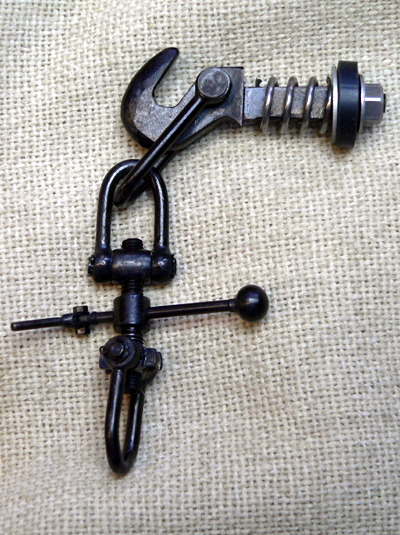
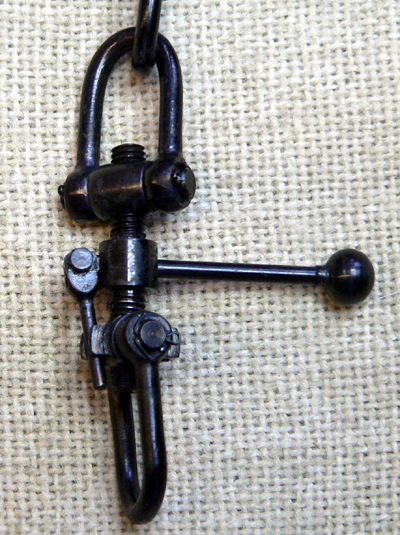
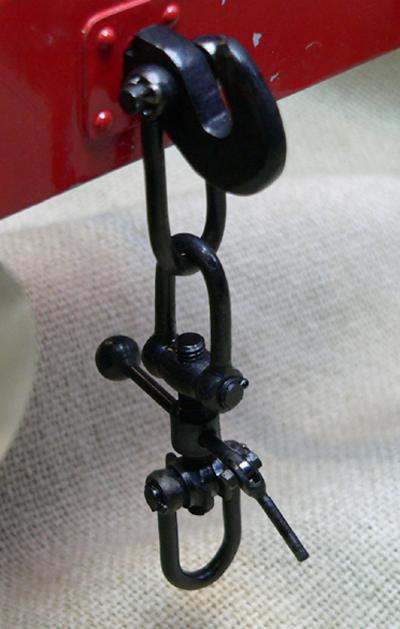
The finishing touch was to burn on a coat of black; dipping all the parts in filthy old engine oil, the burning off the oil using a low power gas flame, repeating a couple of times.
I guess the nod of approval came from a fellow club member when he asked, "Does it lock ?", and to his satisfaction, I was able to demonstrate that it really does !